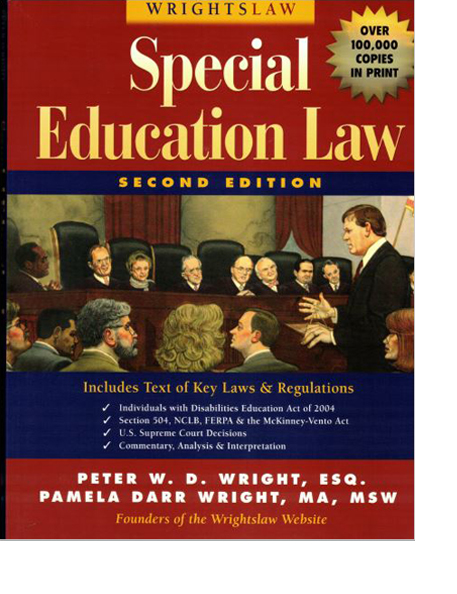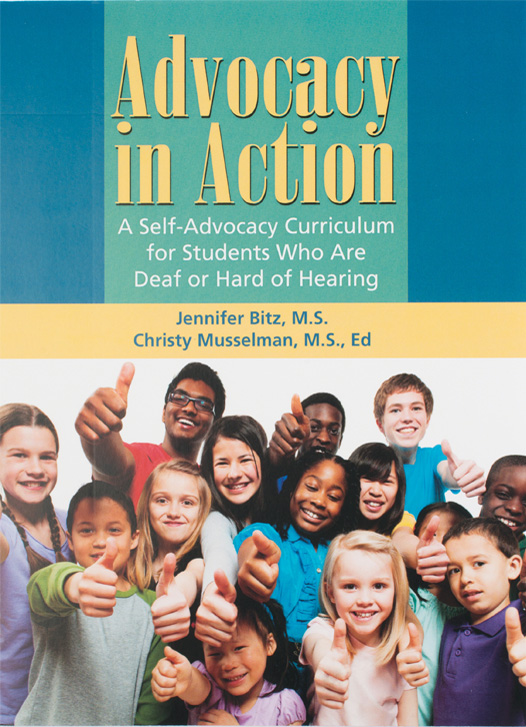Related Products
For Professionals
- Amplification
- Assessment of Student Skills, Challenges, Needs
- Early Childhood: Infants, Toddlers, Preschool
- Hearing Loss – Identification, Impact and Next Steps
- IDEA Law Summary Information
- Language and Speech Development Issues
- Legal Issues in Serving Children with Hearing Loss
- Listening (Auditory Skills) Development
- Planning to Meet Student Needs
- Self-Advocacy Skills for Students with Hearing Loss
- Self-Concept: How the Child with Hearing Loss Sees Himself
- Social Skills
- Speech Perception & Learning
Related Teacher Tools Takeout Items
Missing Bits Results in Syntax Deficits
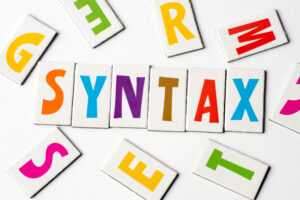
Students with hearing loss, whether hard of hearing or deaf, are at high risk for deficits in syntax due to their imperfect perception of the English language. Word endings, tense, and other grammatical features are often lost when these ‘bits and pieces’ are not perceived. Extra direct instruction in grammar and syntax is usually necessary for students with hearing loss, as their missing bits often result in poorer comprehension – whether of conversation or the written word. These deficits can be glaring when a student turns in a written assignment.
The challenge: Effectively teaching grammar and syntax is a daunting task. Hearing peers largely absorb correct syntax through listening alone and have a good handle on it as they begin to develop reading skills. As early as kindergarten, typical students following the general education curriculum should be able to (with adult assistance) speak/sign, read, and write a grammatically correct sentence as simple as “I like pizza.” to as complex as “My brother rides his red bike around the park after school.” By the fourth grade, typical students should be able to speak, read, and write sentences as simple as “I like pepperoni pizza from Pizza Hut.” to as complex as “Jason, Kim and I rode in my mother’s dark blue Suburban to the movies on Friday night where we saw three of the most popular students in our school.” By middle school, typical students are responsible for the intricate content of novels. They are often given a prompt or topic as a writing assignment and a few ideas at which point they are on their own to generate the rest. Where typically hearing and developing students gradually absorb syntax with minimal extra instruction, students with hearing loss often have to work hard to keep up with this rate and complexity of typical development.
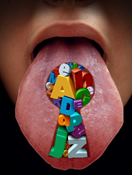
What we need to know about syntax skills whether students use spoken language or a sign system:
- Can the student speak/sign a sentence with a subject and a verb?
- Use tense markers?
- Use singular and plural forms? Many times, the /s/ on the end of plural words is not heard. The same can hold true for the possessive ‘s. If the student uses ASL, plural is shown by repeating the sign, such as CHAIR-CHAIR-CHAIR for “chairs”
- Use articles and determiners? (the, a, that, this, etc.).
- Are there any descriptive words being used? Prepositions?
- For ASL users, is the student using classifiers? Nonmanual markers?
Assessment: As with other areas of instruction, it always helps to start with the basics – identifying the student’s challenges. As part of a functional assessment for syntax, taking language samples is a great way to take inventory of what a student knows. Use a smart phone to record a student as you read a book together or discuss a topic. Try to obtain about 50 utterances, which may take more than one session with some students. After doing recorded language samples several times, you will begin to feel adept at listening and looking for patterns in the student’s language. Other assessment methods are provided as follows.
Does the language make sense? (Is it sequential?)
When language samples have been analyzed, gaps can be determined as can targets for instruction. Whatever your method for obtaining data whether it is language sampling, formal tests, or functional assessments suggested below, syntax is an important piece of the reading and comprehension puzzle and must be assessed!
Other tools for gathering functional data:
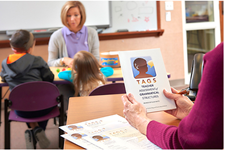
Test of Grammatical Structures (TAGS) PRESCHOOL and ABOVE
Part of the Preschool Language Pack, the CID Teacher Assessment of Grammatical Structures (TAGS) is a series of three rating forms developed to evaluate a child’s understanding and use of the grammatical structures of English. The rating forms provide a representation of grammatical structures for children with hearing loss who develop grammatical structures in smaller increments and at slower rates compared to children who are typically developing. This starter kit is a guide to using the CID TAGS system for teaching and tracking receptive and expressive language development in oral children who are deaf and hard of hearing. It can also be used to evaluate sentence structure for children who use sign language. The TAGS rating forms enable teachers to:
| FREE CID Online Course: The Art of the Structured Syntax Lesson: Assessing, Planning and Prompting |
- determine present levels of syntax skills
- determine syntax goals for IEPs and lessons
- track syntax development over time and
- report syntax progress to parents and other professionals
Grammar Chipper Chat GRADE K-5
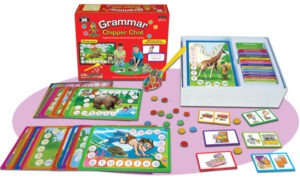
These materials allow you to explore 16 of the grammatical structures found on most language assessments (i.e., CELF, TOLD). Each grammar area has 20-30 color-coded question cards with a sentence prompt on one side and images on the reverse side. The student fills in the missing word on the question side using the pictures as cues. A functional assessment can be performed using these cards. A subset of cards in each of the 16 areas (i.e 3-4 cards) can be shuffled together and presented in random order to the student. Additional cards can be presented in the areas in which there are errors to verify that there is a lack of functional use (up to 10 cards per problematic area). Refer to Brown’s Stages to assess or intervene in sequence of development. A valuable means to pinpoint issues and monitor progress in syntax learning.
Cracking the Grammar Code GRADE 5 – ADULT
 Within the 149-page FREE downloadable Syntax Skill Pretests and Simple Skill Activities
Within the 149-page FREE downloadable Syntax Skill Pretests and Simple Skill Activities
sample book, there are pretests teachers can use to identify students’ skill levels. Each pretest has a rubric to diagnose specific skills in the broader category. The pretests and answer keys are provided for the following syntax skill areas: Nouns, Articles, Conjunctions, Verbs, Pronouns, Adjectives-Adverbs-Prepositional Phrases, Finding the Subject, and Subject-Verb agreement. A passing score is 80% on any of these functional assessments. If your student does not pass various parts of the pretest the specific lesson to start on within the Cracking the Grammar Code workbooks is provided.
Download the Free Syntax Skill Pretest book and start assessing your students ASAP!
Formal, norm-referenced testing
There are a number of test instruments typically administered by speech language pathologists that will assess a student’s level of syntax development. If a student has received an evaluation by a speech language pathologist in the previous 6 months it is often useful to review those results for insights into specific areas of syntax deficit that have already been identified.
Teachers of the deaf/hard of hearing often perform assessments related to students’ listening comprehension ability, specifically the ability to recall and understand information presented by others. Two popular assessments for this purpose also provide some information about student syntactic understanding or use. While not an extensive investigation into syntax, if a TDHH is performing one of these tests anyway, it may provide a starting place to focus additional syntax assessment, for example with the Cracking the Grammar Code free syntax skill pretest book.
Oral Passage Understanding Scale (OPUS)
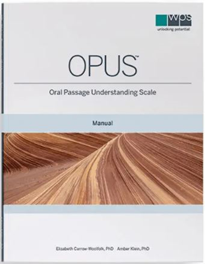
For ages 5.0 to 21 years, the Oral Passage Understanding Scale is a measure of listening (auditory) comprehension. It evaluates a person’s ability to listen to passages that are read aloud and recall information about them. This ability is key to success in the classroom and social situations. It also measures memory skills, which are integral to listening comprehension. OPUS identifies how well a person can integrate and apply knowledge in three structural categories of language:
- 1. Lexical/Semantic: knowledge and use of words and word combinations
- 2. Syntactic: knowledge and use of grammar
- 3. Supralinguistic: knowledge and use of language in which meaning is not directly available from the surface lexical and syntactic information.
Measuring higher-level comprehension skills, including inference and prediction, yields more detailed information beyond simply whether or not the individual can comprehend. These skills require deeper processing abilities.
Test of Narrative Language-2 (TNL2)
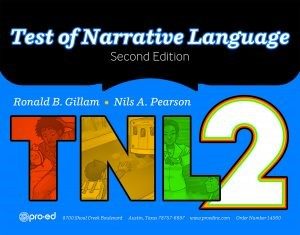
For ages 4.0 – 15-11, the TNL2 provides a format that shortcuts the typical lengthy language sample analysis process. No transcription is necessary. Children’s answers to the comprehension questions and their stories can be reliably scored from audio recordings (use your Smart Phone!). The instructions are scripted and clear examples are used for scoring. The TNL should be of great benefit in identifying students who have adequate language, but issues using their language ability for ongoing interactions in an age-appropriate manner.

